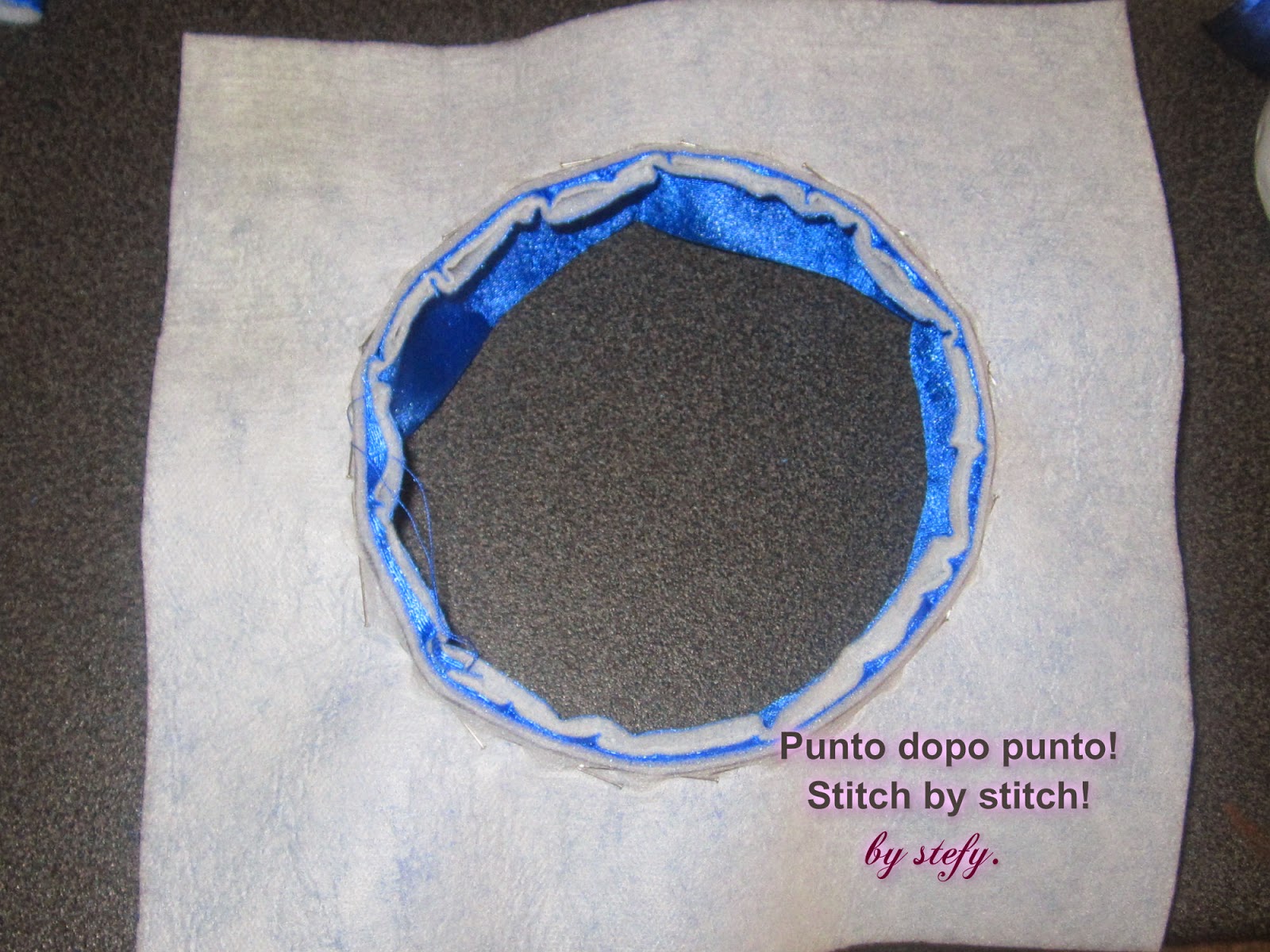Il Jabot è un accessorio indossato dagli uomini del alta società nel 17º e 18º secolo. Le donne hanno iniziato ad indossarlo per abbellire le loro camicette nel 19º secolo.
Spesso torna di moda in diverse varianti. La stoffa più adatta è il pizzo.
Io l'ho creato per un costume di carnevale da pirata.
Occorrete:
- 2 metri di nastro di pizzo alto 6cm,
- 25cm of tessuto dello stesso colore del pizzo,
- 50cm elastico largo 1cm,
- forbici, cotone per cucire, ago e spilli,
- Un po'di carta per il modello, riga e penna,
- macchina da cucire.
Metodo:
Jabot con 4 volantini di pizzo.
Iniziamo con il bordo superiore di 8cm.AB
Se usate pizzo largo 6cm, calcolate 5 cm per ogni volantino, in tal modo che i volantini vengono un po' uno sopra l'altro.
Il bordo inferiore deve essere a 20cm (5cm x 4 volantini) e deve misurare 14cm. CD
Unite il bordo laterale AC e BD.
Poi aggiungiamo il bordo superiore EF, che serve per rifinire il lavoro è passare l'elastico.
Il modello è pronto.
Appoggiate il modello sulla stoffa piegate in due, diritto con diritto. Si taglia la stoffa.
Ricordate di tagliare 1cm in più tutto attorno per le cuciture.

È il momento di cucire il bordo laterale e inferiore. Lasciamo il bordo superiore aperto per girare il lavoro. Dato che non è un progetto grande si può anche cucire a mano.
Tagliate la stoffa in eccesso e girate sotto sopra.

Spingete gli angoli con un attrezzo appuntito. Sistemate i bordi belli piatti con gli spilli e impunturare.
Orlare la parte superiore del jabot, lasciando abbastanza spazio per passare l'elastico.

Ora passiamo al pizzo.
Tagliate 4 pezzi con le seguenti misure: 25cm, 35cm, 45cm e 55cm.
.

Orlate i bordi del pizzo per un lavoro più pulito, e arricciare il pizzo alla misura giusta.

Iniziate con il volantino più piccolo, che va cucito al bordo superiore ed a seguire gli altrimenti tre volantini.

Passate l'elastico nel orlo superiore.

How to make a Jabot.



































